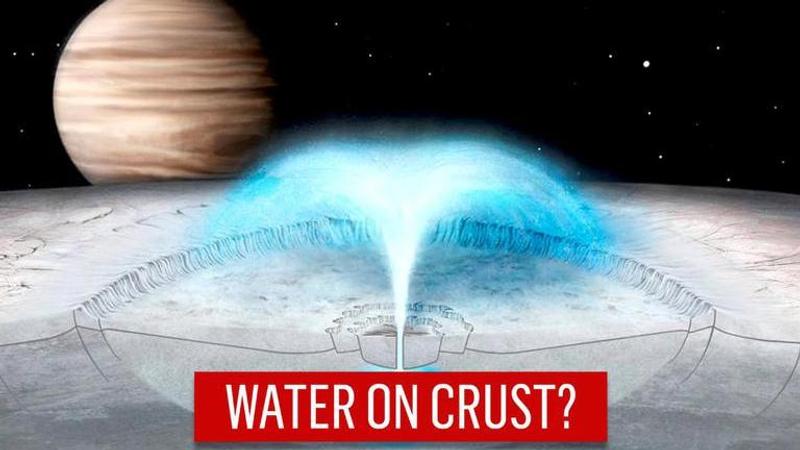Published 02:27 IST, November 17th 2020
NASA probes habitability of Jupiter's moon Europa with possible discovery of water
According to NASA scientists, the plumes of water vapour venting into space from Jupiter's moon 'Europa' could be coming from its own icy crust.

According to NASA scientists, the plumes of water vapour venting into space from Jupiter's moon 'Europa' could be coming from its own icy crust. The images collected by Galileo spacecraft show a process for brine or salt-enriched water. The model created by the researchers shows the salt-enriched water moving around within the moon's shell and eventually forming pockets of water that are more concentrated with salt and can possibly erupt.
"Understanding where these water plumes are coming from is very important for knowing whether future Europa explorers could have a chance to actually detect life from space without probing Europa's ocean," said lead author Gregor Steinbrugge, a postdoctoral researcher at Stanford University's School of Earth, Energy and Environmental Sciences.
Scientists have considered the possible plumes on Europa a promising way to examine the habitability of Jupiter's icy moon, especially since they offer the opportunity to be directly sampled by spacecraft flying through them, an official release by NASA said. The insights into the movement and composition of the ice shell covering Europa's global, interior ocean can help ascertain if the ocean contains the ingredients needed to support life, the release further said.
Source of the plumes is important
According to scientists, the source of the plumes is important. Water originating from the icy crust is considered less hospitable to life than the global interior ocean because it likely lacks the energy that is a necessary ingredient for life, the scientists claimed. With regards to Europa's ocean, the energy could come from hydrothermal vents on the seafloor, they added.
Furthermore, using images collected from Galileo spacecraft, the scientist developed a model to propose how a combination of freezing and pressurisation could lead to a cryovolcanic eruption or a burst of frigid water. The results, published in Geophysical Research Letters on November 10 shed light on eruptions on other icy bodies in the solar system.
Researchers focused their study on 'Manannan'
The researchers concentrated their study on 'Manannan', a 29-km-wide-crater on Europa that resulted from an impact with another celestial object tens of millions of years ago.
"The comet or asteroid hitting the ice shell was basically a big experiment which we're using to construct hypotheses to test," said Co-author Don Blankenship, a senior research scientist at the University of Texas Institute for Geophysics (UTIG).
The model shows that as Europa's water partly froze into ice following the impact, leftover pockets of water could have been created on the moon's surface. The salty water pockets can move sideways through Europa's ice shell by melting adjacent regions of ice and consequently become even saltier in the process, researchers added.
Updated 02:27 IST, November 17th 2020



